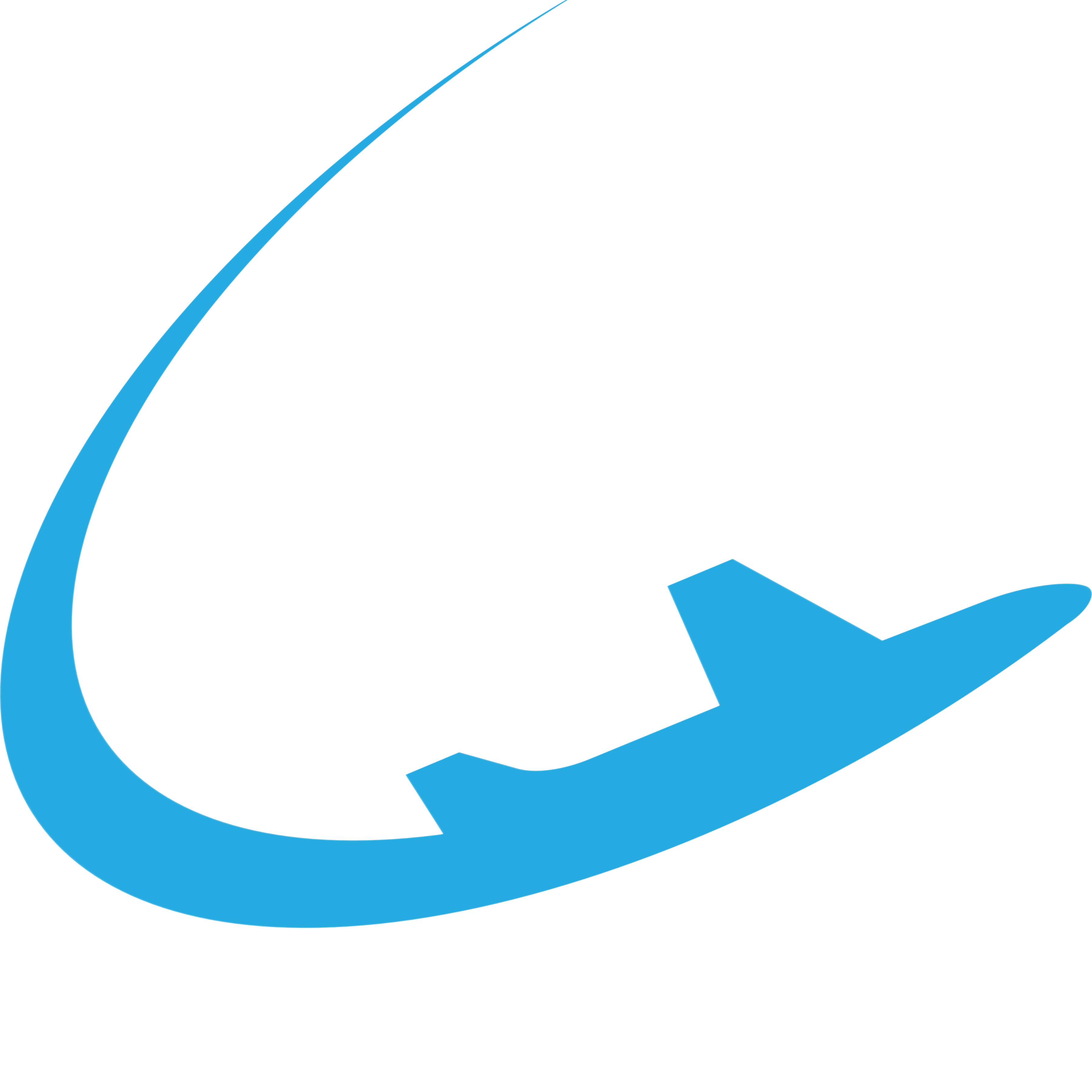In der heutigen hypervernetzten Welt geht der Bereich der Luftfahrt weit über die physischen Flugzeuge und Kontrolltürme hinaus und umfasst ein riesiges und komplexes digitales Ökosystem.
Diese digitale Landschaft birgt ein grenzenloses Potenzial für betriebliche Effizienz und Kundenerfahrung, stellt aber auch eine Vielzahl von Cybersicherheitsherausforderungen dar, die mit Dringlichkeit und Fachwissen angegangen werden müssen.

Steigende Cyber-Risiken für die Luftverkehrsbranche
Die Zunahme von Cyberangriffen auf die Luftverkehrsinfrastruktur lässt sich auf eine Vielzahl sich entwickelnder Faktoren zurückführen:
- Geopolitische Spannungen: Die verstärkten Cyberangriffe nach dem Krieg zwischen Russland und der Ukraine sind ein Beispiel für die Auswirkungen geopolitischer Unruhen auf das Internet.
- COVID-19 Auswirkungen: Die pandemiebedingte Verlagerung auf digitale Technologien hat unbeabsichtigt die Cyber-Anfälligkeit der Branche erhöht.
- IoT- und OT-Schwachstellen: Die Einführung von IoT- und OT-Technologien hat zu neuen Systemschwachstellen geführt.
- Unterinvestition in Cybersicherheit: Nach dem Abschwung in der Luftverkehrsbranche wurde erheblich zu wenig in die Cybersicherheit investiert, was dazu führte, dass die Systeme der Unternehmen anfällig wurden.
- Digitalisierung und Interdependenzen: Da die Lieferketten immer digitaler und vernetzter werden, erweitert sich die Landschaft der Cyberrisiken.
- Fernarbeit: Die Zunahme der Telearbeit hat die Zahl der potenziellen Angriffspunkte für Cyber-Bedrohungen erhöht.
- Fortgeschrittene Cyber-Bedrohungen: Die zunehmende Raffinesse von Bedrohungen wie Ransomware und Phishing-Angriffen stellt eine zusätzliche Herausforderung dar.
Der Luftfahrtsektor ist einzigartig, sowohl in seiner entscheidenden gesellschaftlichen Rolle als auch in der Komplexität der sich überschneidenden Ebenen. Auf der einen Seite gibt es eine komplexe, globale IT-Infrastruktur, die Aufgaben wie Ticketing, Logistik, Kundenservice und mehr unterstützt. Auf der anderen Seite gibt es eine Vielzahl von OT-Systemen, die geschäftskritische Aufgaben wie Flugsicherung, Navigation und Flugzeugsysteme übernehmen. Beide sind lebenswichtig, beide sind unterschiedlich, und beide sind potenzielle Ziele für Cyber-Bedrohungen.
Strategien zur Cybersicherheit entwickeln sich weiter
In jüngster Zeit wurde eine Reihe bemerkenswerter Strategien, Politiken und Leitlinien veröffentlicht, um diesem zunehmenden Risiko für die Luftverkehrsbranche zu begegnen:
Internationale Zivilluftfahrt-Organisation (ICAO) - Leitfaden zur Cybersicherheit
Vereinigte Staaten - TSA Cybersecurity-Anforderungen
Europäische Union - Vorschriften der EU-Agentur für Flugsicherheit
Vereinigtes Königreich - Cyber-Sicherheitsstrategie für die Luftfahrt
Weltwirtschaftsforum (WEF) - Luftfahrtbranche fordert einheitliche Cybersicherheitspraktiken, um wachsende Risiken zu mindern
Ein gemeinsamer Nenner dieser Richtlinien und Strategien ist die Bedeutung von Defense in Depth, einem mehrschichtigen Ansatz für die Cybersicherheit, der mehrere Sicherheitskontrollen zum Schutz vor verschiedenen Arten von Bedrohungen kombiniert. Defense in Depth hilft bei der Verhinderung, Erkennung und Reaktion auf Cyberangriffe sowie bei der Wiederherstellung nach solchen Angriffen.
Traditionelle SOCs vs. SOCs der nächsten Generation
Ein weiteres gemeinsames Thema, das Teil der Defense-in-Depth-Strategie ist, ist die hilfreiche Rolle von Sicherheitsoperationszentren (SOC), bei denen es sich um spezielle Teams oder Einheiten handelt, die Cybervorfälle, die Luftfahrtsysteme betreffen, überwachen, analysieren und auf sie reagieren. SOCs bieten kontinuierliche Sichtbarkeit, Situationsbewusstsein und Vorfallsmanagement-Funktionen für Luftfahrtunternehmen. SOCs können intern sein oder an spezialisierte Dienstleister wie MSSPs (Managed Security Service Provider) ausgelagert werden.
An dieser Stelle können MSSPs (Managed Security Service Provider) helfen. MSSPs sind spezialisierte Unternehmen, die ausgelagerte Cybersicherheitsdienste für Kunden anbieten, wie Überwachung, Erkennung, Reaktion, Wiederherstellung und Berichterstattung. Durch die Zusammenarbeit mit MSSPs können Luftfahrtunternehmen von folgenden Vorteilen profitieren:
- Zugang zu fortschrittlichen Tools und Technologien für die Cybersicherheit
- Fachwissen und Beratung durch qualifizierte Cybersicherheitsexperten
- Geringere Betriebskosten und Risiken
- Verbesserte Einhaltung von Vorschriften und Industriestandards
- Verbessertes Ansehen und Vertrauen
Allerdings sind nicht alle MSSPs gleich, denn es gibt einen ganz erheblichen Unterschied zwischen traditionellen SOCs und solchen, die als SOCs der nächsten Generation eingerichtet wurden, die in der Lage sind, den neuen und zukünftigen Bedrohungen zu begegnen. Wir bei Senthorus sind stolz darauf, ein SOC der nächsten Generation zu sein, und genau diese Unterschiede stellen wir häufig fest, wenn wir neue Kunden aufnehmen, die bisher mit traditionellen SOCs gearbeitet haben:
Eigenschaften | Traditionelle SOC | Senthorus SOC der nächsten Generation |
|---|---|---|
Reaktiv vs. Proaktiv | Überwiegend reaktive Massnahmen. Reagiert auf Sicherheitsvorfälle, sobald sie auftreten. | Legt Wert auf proaktive Massnahmen. Jagt aktiv nach Bedrohungen und nutzt vorausschauende Analysen, um Vorfälle zu verhindern. |
Qualität der Experten | SOC-Analysten werden nicht im Voraus auf ihre Fähigkeiten geprüft, und es gibt eine hohe Fluktuation, so dass die Qualität der Fachkenntnisse im Laufe der Zeit sehr uneinheitlich ist. | Unsere SOC-Analysten durchlaufen vor der Einstellung einen strengen Prozess Tests und Screenings, um sicherzustellen, dass sie unseren hohen Standards entsprechen. Sobald sie an Bord sind, werden sie ständig getestet und geschult, um auf dem neuesten Stand der Technik sein. |
Technologie | Verwendet in erster Linie etablierte Sicherheitstechnologien wie Firewalls und Intrusion-Detection-Systeme. | Einbindung fortschrittlicher Technologien, wie z. B. künstliche Intelligenz und maschinelles Lernen, um Bedrohungen effektiver zu erkennen und darauf zu reagieren. |
Onboarding-Geschwindigkeit | Die Einarbeitungszeit beträgt in der Regel zwischen 4 und 6 Monaten. | Senthorus bietet Express-Onboarding-Dienste die zwischen 6 und 18 Wochen dauern |
IT/OT-Integration | In der Regel werden IT- und OT-Sicherheit als getrennte Bereiche behandelt und sind im Backend nicht miteinander verknüpft. | Bietet integrierte IT/OT-Sicherheitsdienste und korreliert Ereignisse über Netzwerke und Domänen hinweg, um eine umfassende Sicherheitslage zu schaffen. |
Spezialisierte OT-Dienste | Sie bieten möglicherweise keine Dienste an, die speziell auf die besonderen Anforderungen der OT-Sicherheit zugeschnitten sind. | Bietet Dienstleistungen an, die speziell auf die besonderen Bedürfnisse der Herausforderungen und Bedürfnisse von OT-Umgebungen. |
Intelligente Bedrohung | Grundlegende Fähigkeiten zur Aufklärung von Bedrohungen. | Fortgeschrittene Fähigkeiten zur Aufklärung von Bedrohungen, einschliesslich der Sammlung und die Analyse von Informationen über neue Bedrohungen. |
Kontrolle über Ihre Daten | Herkömmliche SOCs verlangen von Ihnen, dass Sie ihnen Ihre Terabytes an Protokollen zusenden, was nicht nur teuer ist, sondern auch ein zusätzliches Risiko für Ihr Unternehmen darstellt und Sie bei einem künftigen Wechsel des SOC-Anbieters zusätzlich einschränkt (Sie müssen Ihre Daten wiederherstellen). | Die Protokolle Ihres Unternehmens verbleiben in Ihrer Umgebung, was die die Kosten der Datenübermittlung, das Risiko für Ihre Daten (einschliesslich der Einhaltung der Vorschriften), und lässt Ihnen die Freiheit, zu anderen SOC-Anbietern zu wechseln, wenn Sie nicht zufrieden sind. |
Einhaltung der Vorschriften und Governance | Standardmässige und unsichere Compliance-Dienstleistungen, die nicht auf Ihre Bedürfnisse zugeschnitten werden können. Sehr geringes Verständnis für die sich entwickelnden Compliance-Anforderungen. | Bietet Dienstleistungen an, die speziell auf die Erfüllung gesetzlicher Anforderungen ausgerichtet sind in IT- und OT-Umgebungen, einschliesslich spezieller Audits und Bewertungen, Datenhoheit, Privatsphäre und Datenaufenthalt Anforderungen. |
Transparenz | Herkömmliche SOC-Dienste bieten nur einen begrenzten Einblick in die Vorgänge. Die Kunden fragen sich, was wirklich vor sich geht, oder müssen Fragen stellen. | Sie sehen, was unsere SOC-Analysten sehen. Senthorus ist völlig transparent mit seinen Kunden, indem er ihnen Zugang zu derselben Konsole bietet, die auch unsere SOC-Analysten verwenden. |
Angesichts der gegenwärtigen Bedrohungen und der Zukunft
Vor diesem Hintergrund sollte sich die Luftfahrtindustrie den gegenwärtigen und zukünftigen Bedrohungen stellen und dabei eine Reihe von Schlüsselkonzepten anwenden:
- Erkennen Sie die Komplexität: Die Herausforderungen für die Cybersicherheit in der Luftfahrtbranche sind vielschichtig und entwickeln sich ständig weiter, was durch geopolitische Einflüsse, die Zunahme der Telearbeit, die zunehmende Digitalisierung und ausgefeilte Cyberbedrohungen unterstrichen wird. Es ist wichtig, dass alle Beteiligten diese Komplexität anerkennen und sicherstellen, dass sie das Risiko nicht unterschätzen oder die Lösungen zu sehr vereinfachen.
- In fortschrittliche Cybersicherheit investieren: Die zunehmende Abhängigkeit von digitalen Technologien und die Vernetzung der Lieferketten in der Luftfahrtindustrie machen Investitionen in fortschrittliche Cybersicherheitsmassnahmen erforderlich. Unternehmen müssen sich schnell an Veränderungen in der Bedrohungslandschaft anpassen und den Angreifern einen Schritt voraus sein.
- Nutzung von SOCs der nächsten Generation: SOCs der nächsten Generation, wie das von Senthorus angebotene, bieten einen proaktiveren und umfassenderen Ansatz für die Cybersicherheit. Sie setzen fortschrittliche Technologien ein, bieten spezialisierte OT-Dienste an und legen Wert auf Transparenz und schnelle Einarbeitung, was in der schnelllebigen Luftfahrtbranche von entscheidender Bedeutung ist.
- Förderung der Zusammenarbeit und des Informationsaustauschs: Die von verschiedenen globalen Organisationen veröffentlichten Strategien und Richtlinien zeigen, wie wichtig die internationale Zusammenarbeit bei der Abwehr von Cyberbedrohungen ist. Der Austausch von Informationen über Bedrohungen, Schwachstellen und bewährte Verfahren kann die allgemeine Cybersicherheitslage der Branche erheblich verbessern.
- Befähigung durch Transparenz: Einer der wichtigsten Vorteile von SOCs der nächsten Generation wie Senthorus ist die Transparenz. Die Tatsache, dass Kunden den gleichen Einblick wie SOC-Analysten haben, fördert das Vertrauen und ermöglicht es ihnen, fundierte Entscheidungen über ihre Cybersicherheitsstrategien zu treffen.
Die Entwicklung der Cybersicherheit in der Luftfahrtindustrie ist eine Herausforderung, aber auch ein entscheidender Schritt. Sie zu meistern, erfordert ständige Wachsamkeit, fortschrittliche Werkzeuge und Techniken sowie ein branchenweites Engagement für den Austausch von Wissen und bewährten Verfahren. Mit diesen Strategien können wir uns auf eine sicherere Zukunft im Luftfahrtsektor freuen.
Kontakt zu unserem Experten
Juan AVELLAN
Senthorus General Manager
Lernen Sie Juan AVELLAN, unseren General Manager bei Senthorus, kennen. Kontaktieren Sie Juan, um zu besprechen, wie er Ihre Cybersicherheitsinitiativen vorantreiben kann.
